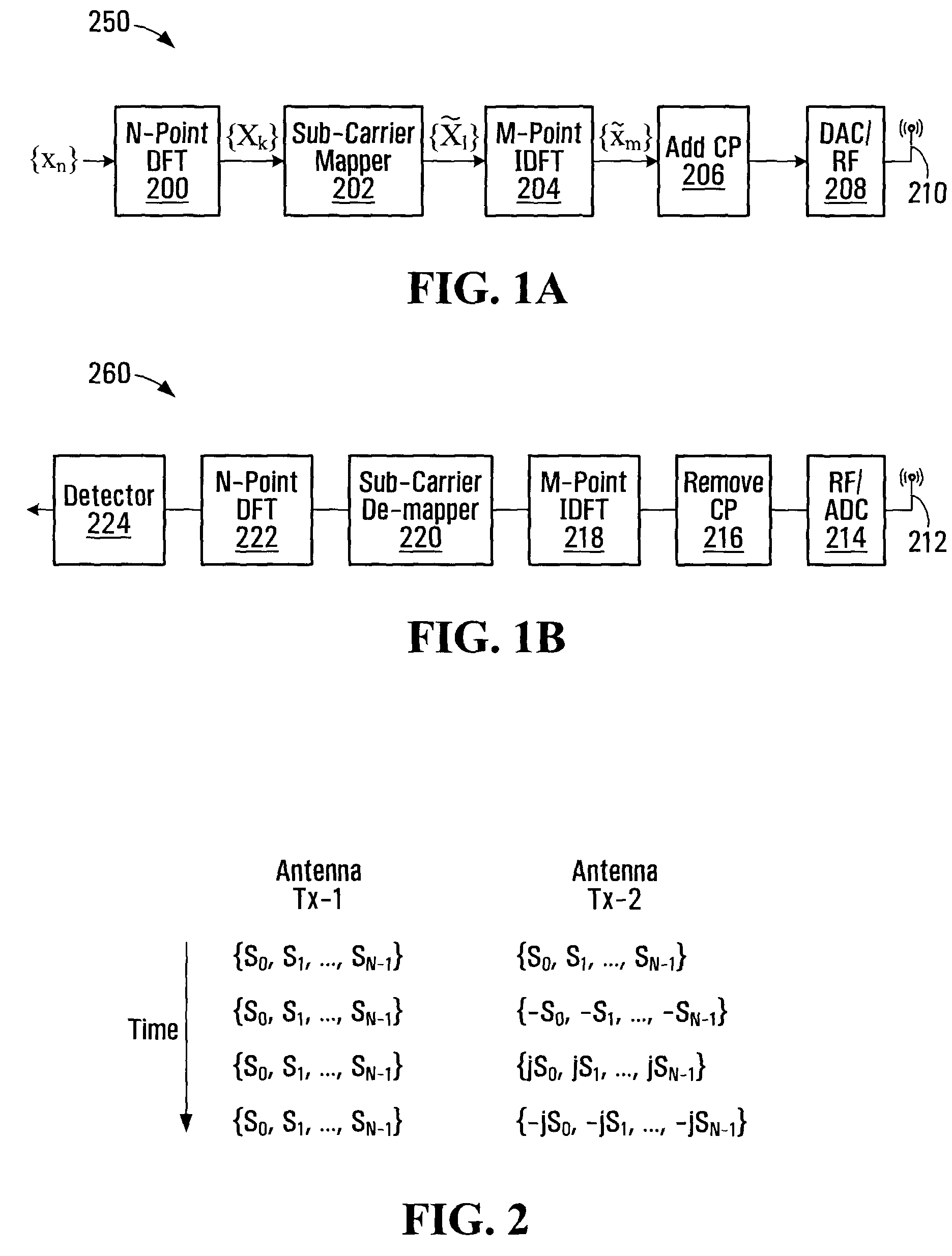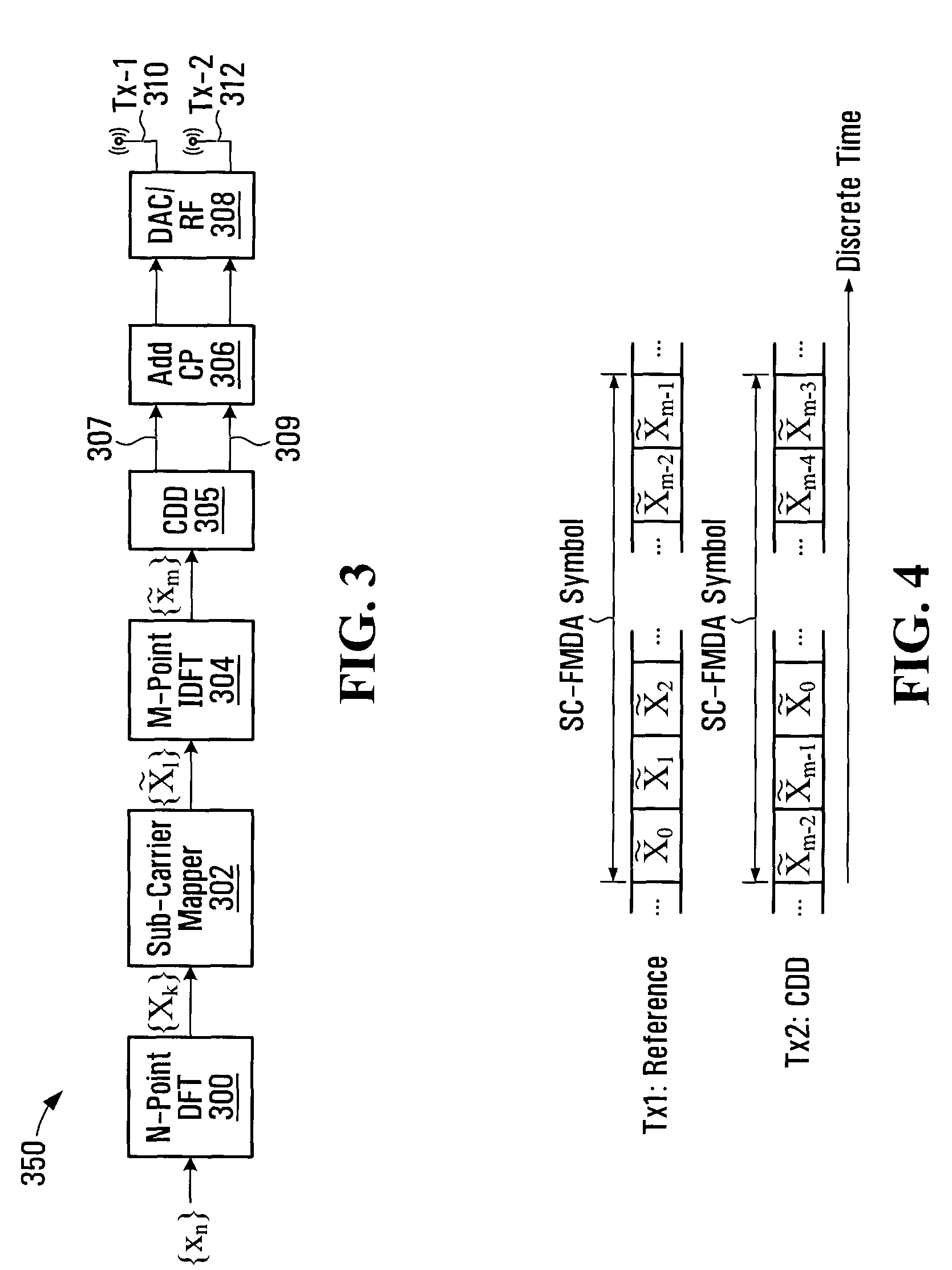Systems and methods for sc-fdma transmission diversity
a transmission diversity and transmission method technology, applied in the field of wireless communication, can solve the problems of introducing multiple access interference, low power efficiency, and significant burden on portable wireless terminals
- Summary
- Abstract
- Description
- Claims
- Application Information
AI Technical Summary
Benefits of technology
Problems solved by technology
Method used
Image
Examples
Embodiment Construction
[0047]In order to preserve the low PAPR property of SC-FDMA, while also exploiting the potential benefits of multi-antenna transmission diversity, one might look to employ an SC-FDMA uplink transmit diversity scheme that has many, if not all, of the following properties:[0048]preserves the low PAPR property of SC-FDMA;[0049]provides a full diversity cycle within one SC-FDMA symbol (all entries in the codebook present in each SC-FDMA symbol);[0050]provides consistent performance regardless of user equipment (UE) speed;[0051]provides multi-level channel combinations; and[0052]is relatively easy to implement for the sake of cost efficiency.
[0053]While the foregoing refers to considerations for transmit diversity in DFT-based SC-FDMA data channels, such as those used in the LTE UL, such considerations are also applicable to other low PAPR signaling schemes, such as frequency domain low PAPR sequence based control channels in the LTE uplink and other multiple access signaling techniques ...
PUM
 Login to View More
Login to View More Abstract
Description
Claims
Application Information
 Login to View More
Login to View More - R&D
- Intellectual Property
- Life Sciences
- Materials
- Tech Scout
- Unparalleled Data Quality
- Higher Quality Content
- 60% Fewer Hallucinations
Browse by: Latest US Patents, China's latest patents, Technical Efficacy Thesaurus, Application Domain, Technology Topic, Popular Technical Reports.
© 2025 PatSnap. All rights reserved.Legal|Privacy policy|Modern Slavery Act Transparency Statement|Sitemap|About US| Contact US: help@patsnap.com



